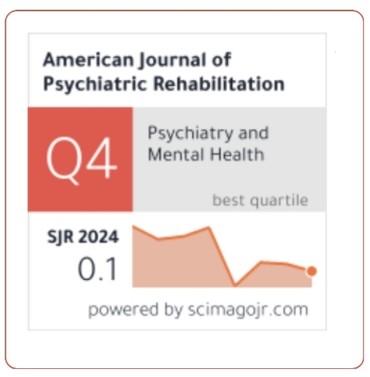Trauma and Violence Informed Practices in Victim Services: A Comparative Review
DOI:
https://doi.org/10.69980/ajpr.v28i5.514Keywords:
Trauma and Violence Informed Practices (TVIP); Survivor-Centered Justice; Victim Services; Comparative justice; VictimologyAbstract
Trauma and Violence Informed Practices (TVIP) mark a critical shift in the delivery of victim services by acknowledging not only the psychological impact of interpersonal violence but also the structural and systemic conditions that perpetuate harm. Positioned within a victimological framework, this paper explores the evolution of TVIP from its clinical and community-based roots to its institutional applications across justice, health, and social care systems. Through a comparative examination of Canada, the United States, and Australia, the study identifies key strategies such as inter-agency collaboration, culturally responsive service design, and survivor-led engagement that have enabled the integration of TVIP principles into diverse legal and social infrastructures. The analysis demonstrates how these countries have begun embedding trauma awareness into routine operations, despite the challenges in standardization, accessibility, and sustainability. Drawing from these insights, the paper critically examines the Indian context, where services for survivors of gender-based violence and legal mechanisms exist but often lack trauma-informed orientation. The paper argues that localizing TVIP in India requires both systemic reform and cultural adaptation, particularly in how police, judiciary, and support services engage with women and children experiencing domestic violence, sexual assault, and child abuse. Ultimately, the paper positions TVIP as a foundational approach to survivor-centered justice, one that transcends procedural assistance to affirm dignity, safety, and empowerment as core institutional values. By foregrounding the lived experiences of survivors, the study advocates for the urgent integration of TVIP within India's evolving victim assistance ecosystem.
References
1. Arora, A., & Sarkar, S. (2023). Victim-Friendly Justice in India: A Reality or an Ideal? Indian Journal of Criminology, 51(1), 44–58.
2. Atkinson, J. (2013). Trauma-informed services and trauma-specific care for Indigenous Australian children. Australian Institute of Health and Welfare & Closing the Gap Clearinghouse.
3. Brave Heart, M. Y. H. (1998). The return to the sacred path: Healing the historical trauma and historical unresolved grief response among the Lakota. Smith College Studies in Social Work, 68(3), 287–305. https://doi.org/10.1080/00377319809517532
4. BC Centre of Excellence for Women’s Health. (2013). Trauma-informed practice guide. https://bccewh.bc.ca/wp-content/uploads/2012/05/2013_TIP-Guide.pdf
5. Bharatiya Nagarik Suraksha Sanhita, No. 45 of 2023, Gazette of India.
6. Bharatiya Sakshya Adhiniyam, No. 46 of 2023, Gazette of India.
7. Bharatiya Nyaya Sanhita, No. 44 of 2023, Gazette of India.
8. Campbell, R. (2006). Rape survivors' experiences with the legal and medical systems: Do rape victim advocates make a difference? Violence Against Women, 12(1), 30–45. https://doi.org/10.1177/1077801205277539
9. Centre for Social Research. (2016). Evaluation of Procedures under the Criminal Law Amendment Act, 2013: A Study in Delhi Courts. CSR.
10. Choudhury, S. (2019). Reimagining Victim Compensation in India: Challenges and Prospects. NUJS Law Review, 12(3), 167–192.
11. Committee on Reforms of the Criminal Justice System (Malimath Committee). (2003). Report of the Committee on Reforms of the Criminal Justice System. Ministry of Home Affairs, Government of India.
12. Criminal Law (Amendment) Act, No. 5 of 2009, Gazette of India.
13. Criminal Law (Amendment) Act, No. 13 of 2013, Gazette of India.
14. Justice Verma Committee. (2013). Report of the Committee on Amendments to Criminal Law. Government of India.
15. Daly, K., & Stubbs, J. (2006). Feminist engagement with restorative justice. Theoretical Criminology, 10(1), 9–28. https://doi.org/10.1177/1362480606059980
16. Elliott, D. E., Bjelajac, P., Fallot, R. D., Markoff, L. S., & Reed, B. G. (2005). Trauma-informed or trauma-denied: Principles and implementation of trauma-informed services for women. Journal of Community Psychology, 33(4), 461–477. https://doi.org/10.1002/jcop.20063
17. Fallot, R. D., & Harris, M. (2009). Creating cultures of trauma-informed care (CCTIC): A self-assessment and planning protocol. Community Connections.
18. Goodman, L., & Epstein, D. (2008). Listening to battered women: A survivor-centered approach to advocacy, mental health, and justice. American Psychological Association.
19. Goodman, L. A., Fauci, J. E., Sullivan, C. M., DiGiovanni, C. D., & Wilson, C. (2016). Domestic violence survivors’ empowerment and mental health: Exploring the role of the alliance with advocates. American Journal of Orthopsychiatry, 86(3), 286–296.
20. Government of Canada. (2019). Reclaiming power and place: The final report of the National Inquiry into Missing and Murdered Indigenous Women and Girls.
21. Healing Foundation. (2017). Bringing them home 20 years on: An action plan for healing. https://healingfoundation.org.au/resources
22. Herman, J. L. (1992). Trauma and recovery: The aftermath of violence—from domestic abuse to political terror. Basic Books.
23. Holder, R., & Daly, K. (2008). Recognition, voice, and consequences: A feminist analysis of restorative justice. Contemporary Justice Review, 11(3), 361–378.
https://doi.org/10.1080/10282580802260164
24. Hopper, E. K., Bassuk, E. L., & Olivet, J. (2010). Shelter from the storm: Trauma-informed care in homelessness services settings. The Open Health Services and Policy Journal, 3(1), 80–100.
25. Isobel, S., & Edwards, C. (2017). Using trauma informed care as a framework in acute inpatient mental health settings: A narrative review. International Journal of Mental Health Nursing, 26(4), 384–394.
26. Jagori. (2018). Tracking Gender Equity under SDG 5: Implementation in Delhi's Policing System. Jagori & UN Women.
27. Justice Canada. (2016). Trauma- and violence-informed approaches to supporting victims of violence: Policy and practice considerations. https://www.justice.gc.ca/eng/rp-pr/cj-jp/fv-vf/tvie-pviv/index.html
28. Knight, C. (2015). Trauma-informed social work practice: Practice considerations and challenges. Clinical Social Work Journal, 43(1), 25–37. https://doi.org/10.1007/s10615-014-0481-6
29. Lal, N. (2020). A Critical Analysis of Victim Compensation in India. Journal of Victimology and Victim Justice, 3(1), 49–65.
30. Mathur, K. (2022). Trauma and Testimony: The Institutional Treatment of Sexual Violence Survivors. Economic and Political Weekly, 57(9), 16–20.
31. McGlynn, C., & Westmarland, N. (2019). Kaleidoscopic justice: Sexual violence and victim-survivors’ perceptions of justice. Social & Legal Studies, 28(2), 179–201. https://doi.org/10.1177/0964663918761200
32. Madhava Menon Committee. (2008). Report of the Committee for Preparation of Policy Paper on Victim Compensation. Ministry of Home Affairs, Government of India.
33. Ministry of Home Affairs. (2023). Explanatory note on the new criminal laws: BNS, BNSS, and BSA. Government of India.
https://www.mha.gov.in/document/explanatory-note-new-criminal-laws
34. POCSO Act, 2012. Government of India.
35. Ponic, P., Varcoe, C., & Smutylo, T. (2016). Trauma- (and violence-) informed approaches to supporting victims of violence: Policy and practice considerations. Department of Justice Canada.
36. SAMHSA. (2014). SAMHSA’s concept of trauma and guidance for a trauma-informed approach (HHS Publication No. SMA14-4884). Rockville, MD: Substance Abuse and Mental Health Services Administration.
37. Sweeney, A., Filson, B., Kennedy, A., Collinson, L., & Gillard, S. (2016). A paradigm shift: Relationships in trauma-informed mental health services. BJPsych Advances, 22(5), 319–333.
https://doi.org/10.1192/apt.bp.114.014886
38. United Nations Office on Drugs and Crime (UNODC). (2020). Model strategies and practical measures on the elimination of violence against women in the field of crime prevention and criminal justice.
39. UN Women. (2022). Responding to violence against women and girls in India: A mapping of victim support services.
40. Van der Kolk, B. (2014). The body keeps the score: Brain, mind, and body in the healing of trauma. Viking.
41. Varcoe, C., Wathen, C. N., Ford-Gilboe, M., & Smye, V. (2016). Trauma- and violence-informed care: Orienting principles for a new approach to care. Canadian Scholars’ Press
42. Walklate, S. (2007). Imagining the victim of crime. McGraw-Hill Education (UK).
43. Walklate, S. (2011). Reframing criminal victimization: Finding a place for vulnerability and resilience. Theoretical Criminology, 15(2), 179–194. https://doi.org/10.1177/1362480610383452
44. Wemmers, J. A. (2013). Victims’ experiences in the criminal justice system and their recovery from crime. International Review of Victimology, 19(3), 221–233. https://doi.org/10.1177/0269758013492755
45. Wilson, C., Fauci, J. E., & Goodman, L. A. (2020). Bringing trauma-informed practice to domestic violence programs: A qualitative analysis of current approaches. American Journal of Community Psychology, 66(3-4), 325–336. https://doi.org/10.1002/ajcp.12438
Downloads
Published
Issue
Section
License
Copyright (c) 2025 American Journal of Psychiatric Rehabilitation

This work is licensed under a Creative Commons Attribution 4.0 International License.
This is an Open Access article distributed under the terms of the Creative Commons Attribution 4.0 International License permitting all use, distribution, and reproduction in any medium, provided the work is properly cited.









